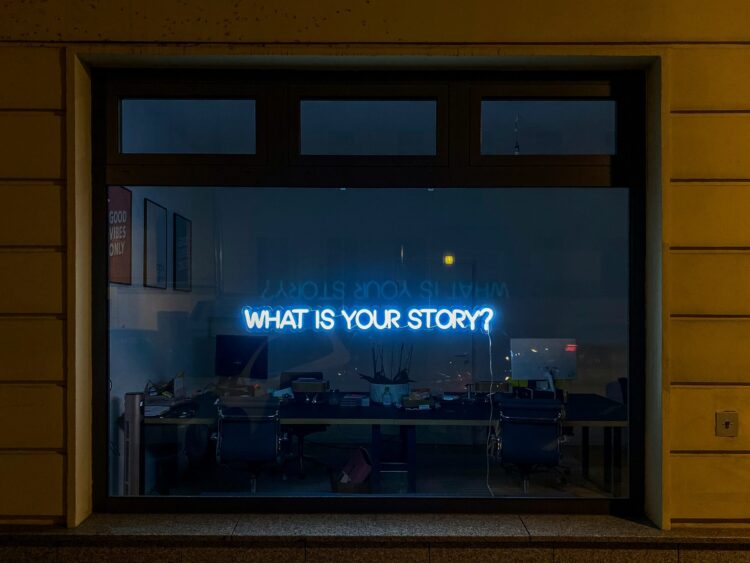EDITOR’S NOTE: In the third installment of our series on interviewing, narrative journalist Kim Cross describes how to find and follow the arc of a story and the central tension or conflict that drives it forward. Previous posts outlined the difference between reporting for news and for narrative, and the pre-interviewing needed to make a successful story pitch.
Interviews are not one-and-done, especially when filling your notebook and recorder for complex pieces that require multiple sources and multiple layers of information. A lot of that work is done before you get to the heart of the story you hope to tell. Preliminary interviews are needed to ensure you have a solid story idea then to find the character or characters who embody that idea — in other words, to find the person you and the readers can follow through an experience.
Once you’ve found your central character, it’s time to work with them to find the narrative arc of their story.
The True North of the first interview with your central character is a search for tension or conflict — the struggle they face and must resolve. But that’s not the best place to begin an interview. Diving straight into the hard questions can set a person back on their heels and make it harder to build rapport.
I like to begin by warming up. That part of an interview should feel more like a conversation than a formal interview. “So, what do you do for fun?” is one of my favorite questions. It almost always elicits a pleasant emotion, an anecdote and plenty of follow-up questions: What’s that like? How’d you get into that? What do you love about it?
It’s even easier if you’ve done a little homework beforehand, perhaps a smart Google search or a survey of their social media posts. You’ll already know that someone’s a Dodgers fan, an avid knitter, a grandparent or the owner of a labradoodle puppy. Ask about those things and nervous subjects will smile, relax, even gush.
The art of the narrative interview
Introduction: News interviews vs story interviews
Phase I: Pre-interviewing for the pitch
Phase II: Interviewing for story arc
Phase III: Interviewing for sequence
Phase IV: Interviewing for scene
It may sound like small talk. But if you listen closely (and watch), you’re gaining insight into character. It’s also a path to finding common ground — a shared interest, hobby or situation that establishes a human connection. Don’t be afraid to open up and share a little about yourself, too. Knowing who they’re talking to — a real person, not a automaton or a clichéd cap-letters REPORTER! — tends to put people at ease.
The first interview can take place at a neutral spot — a coffee shop, park, wherever the person feels comfortable. But there are great advantages to meeting in the person’s natural habitat — their workplace, or better yet, their home.
Pulitzer Prize-winning feature writer Lane DeGregory says she always asks, “Can I come over?” If a prospective story subject says no, she doesn’t push or fold. She simply asks, “Okay, where do you want to meet?” But often the people she reaches out to say yes and invite her into their lives. She usually starts by asking them to show her around. Give her a little tour. It makes people feel a little less “perceived” and more in control. It can also lead to a story different from the one you were expecting.
“I had this one lady take me on a tour of her house,” DeGregory told me. “The story completely changed by the time we got up the stairs.”
The way people inhabit their space and feather their nest reveals a lot about them and invites easy questions that can help them (and you!) relax as you get to know and trust each other. Questions like:
- Are those your kids in that photo? How old are they? What do they do for fun?
- How did you win that trophy? How’d you get into that sport/hobby/endeavor?
- Is that a souvenir from a trip you took? Where? When? What was it like?
The struggle that makes the story
I usually spend the first five or 10 minutes of the first interview warming up. Once I see a person relax, I move slowly toward the goal: conflict.

In classic narrative, it’s the struggle that follows an “inciting incident.” It’s the journey a character takes when they confront a complication or challenge and have to work through it to some sort of resolution.
What I hunting for is what screenwriter Aaron Sorkin calls “intention and obstacle.” The character has a very specific dream, desire or goal. As they pursue it, their path is fraught with hurdles, locked doors or booby traps. These obstacles may be external (rejection, enemies, wrong turns) or internal (doubt, mistakes, self-sabotage) and they stymy the character’s progress toward the end-goal.
Sportswriter Gary Smith calls it the “central conflict.”
“Every person has a central conflict to their lives and a daily manifestation of that conflict. Find the central conflict, find its daily manifestation,” he says, “and it draws you closer to that person’s soul.”
I personally like the term “ordeal” because it implies drama, but the nature of that drama can be serious or comical. It might involve healing from trauma — or a middle-aged mother’s non-pivotal quest to master a wheelie.
They key is that the character must struggle in some way. The struggle creates tension, which is the engine of a narrative. It’s also a source of character development: The struggle makes a character relatable, inviting the reader to sympathize or empathize. That connection often prompts the reader to engage in the story and invest in the character’s journey: What have they gone through? How did it start? What obstacles did they overcome, and — this is critical—how did they overcome these obstacles? What did they learn? What was the resolution? How did it end?
Letting the story unfold
In this early phase of interviewing for narrative, it’s helpful to focus on broad and open-ended questions. So how did you get interested or involved in XYZ? What was that like? When and how did all this begin?
Then: Listen. Let them talk. Resist the urge to interrupt or ask clarifying questions. (The time for that will come later.) Many people have surprisingly good storytelling instincts, and if you let them talk without too much interruption, you’ll see the story start to emerge.
If I had only three questions to ask to find a person’s narrative arc, it would be these:
- What’s the hardest thing you’ve been through?
- How did you get through it?
- How did it change you?
* * *
Kim Cross is a journalist, historian, and author of “What Stands in a Storm,” “The Stahl House” and “In Light of All Darkness.” She teaches graduate level Feature Writing for Harvard Extension School’s master’s degree program in journalism and is a founding instructor of the Hemingway Center’s Sawtooth Writing Retreat.



